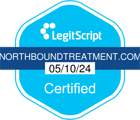The Academy at NTS is a unique program combining drug and alcohol treatment with college classes. The concept originally is unique in that originally, when one of the first college programs in a drug rehab was created in 1997 at Sober Living By The Sea, the drug rehab industry was not interested in the idea at all. In fact, the drug rehab industry, including Sober Living By The Sea, thought it was insane to put people in drug rehab on a college campus and in college classes. Back then, the management at Sober Living By The Sea would only allow clients to participate in classes that focused on addiction treatment in the Human Services department at Saddleback College in Mission Viejo. As the success of the clients within the program became apparent, the program was picked up for another semester and the rest is history.
During its early years of development, it was becoming harder and harder to sell clients on the idea of taking college classes only in the Human Services Drug and Alcohol Treatment department at Saddleback College. The general thought again that putting clients in general education classes (psychology, sociology, art history, etc…) would set the clients up to fail, but after the clients succeeded Sober Living By The Sea executives began softening to the idea and today clients are allowed to take any class that fits their educational needs. The drug and alcohol counseling classes that made up the original college program model remains an integral part of all of the college drug rehab programs in Orange County, but today clients have the option of taking them, whereas in the beginning, clients had no choice.
As with any new idea that messes with tradition, the college program combined with drug and alcohol treatment was met with resistance at first, but research has shown that the combination is highly successful in helping people struggling with addiction in their recovery. The reasons for the model’s success is still under investigation, but here are a few reasons why the college combined with drug and alcohol treatment produces longer lasting results:
- It has been found that increasing the frontal lobe activity in the brain in early treatment helps with the neurogenesis process. Education and learning increases frontal lobe activity.
- Clients in the college program begin and finish together, creating a unique group cohesion that is often lacking in normal treatment when clients are constantly admitting and discharging from a drug treatment program.
- Clients in the college program have significantly more staff contact than they do in regular treatment. Clients in the college program will spend more hours with staff than in regular treatment because their treatment schedules include study groups, special academic groups, and life skills groups in addition to the regular treatment program groups and lectures.
- Clients feel as though their time in treatment is more productive. When clients take classes that further their educational/career goals while they are in treatment they feel as though their life is not on hold and they have something to look forward to. This increases hope.
- Self-esteem and confidence in their ability to start and finish something (i.e., a college class or two) is increased.
- Discipline is increased. When clients are in the college program they learn to “suit up and show up” as the saying goes. They are driven to and from classes and their attendance is closely monitored. Once clients get into the habit of attending class regularly, they realize that college is not as overwhelming as they had thought when they were missing numerous classes during their drinking and drugging days.
- Increased Length of Stay – One of the primary mitigating factors in successful treatment is length of stay in drug treatment. When clients participate in the college program they are required to stay for the duration of the semester, which is typically 4 to 5 months and after one semester in the college program clients often decide to stay an additional semester, meaning that clients in college drug rehab programs remain in treatment longer than people in traditional 90 day residential treatment programs. It has long been established in research that the longer a person stays in treatment (up to one year) the better their chances are of long-lasting recovery.
The college drug rehab program has evolved over the years, but these primary factors thought to contribute to the college program model’s success remain the same.
You may be wondering why more drug rehabs have not jumped on the college program bandwagon…well, the fact is that only a few people know how to successfully run and operate a college drug rehab program and most of them were involved in the original TEACH Program or some other program created by the founders of the original college program at SLBTS, Rick Mermelstein, Paul Alexander, Beth Phillips, Jana Tufty, Heather Devore and later Mellissa Holmes, and Shannon Reed. Creating a successful college drug rehab program within an existing drug rehab requires a flexible treatment program, supportive executive staff, and knowledge of the different aspects that create a successful college program, and someone who fully understands how to operate a college program. Some drug rehabs have attempted to create college programs, but they inevitably create more failures than successes because they do not develop a program to support the clients attending college. What usually happens is that drug rehabs simply allow clients to attend college while in their program, but do not create any programming specific to the student’s needs (i.e., groups, study skills training, syllabus monitoring, orientation, graduation, academic guidance, career testing, help registering, help transferring, etc…). What inevitably happens in these failed attempts at creating a college program within a larger drug treatment facility, is that the clients do fail, because they are not correctly taught how to succeed. They simply repeat old academic patterns in sobriety. It becomes the definition of insanity: Repeating the same old behavior and expecting different results.
Author
-

President, CEO & Founder at Northbound Treatment Network
Paul Alexander is the CEO, President & Founder of Northbound Treatment Network in Newport Beach, California. He believes wholeheartedly in transformational leadership, organizational health and effective, fully integrated substance use disorder and mental health treatment. With over 27 years of experience in behavioral healthcare, Paul has extensive knowledge of “in vivo” treatment modalities, clinical development, operations, strategy, marketing and financial planning. He has been widely recognized for his development of collegiate-based residential treatment programs for students in recovery and authored a research study at The University of California confirming this modality’s effectiveness.
Paul’s comprehensive professional experience, willingness to innovate, and emphasis on organizational health are vital factors in Northbound’s continued success. Paul received his Certified Addiction Treatment Specialist training at Saddleback College in Mission Viejo, CA, and was awarded Outstanding Alumni Service Award in 2002. Paul holds a Bachelor of Arts degree in Criminology, Law and Society, Summa Cum Laude, from University of California, Irvine, and a Juris Doctorate degree from Loyola Law School of Los Angeles. Paul currently serves on The National Association of Addiction Treatment Providers (NAATP) board. In addition, he serves on The Family Recovery Foundation board and The CarePossible board in Orange County; both organizations are committed to raising funds for family recovery and treatment for former military personnel. Paul is in recovery himself and lives in Orange County with his wife Silvana and his two young sons, Noah and Dean.










